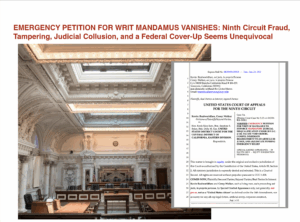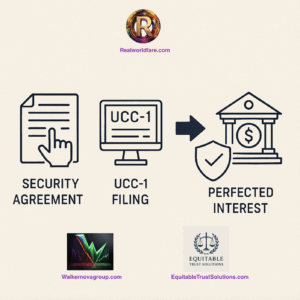Understanding the distinction between a demand and a motion is essential in legal and commercial matters, as each serves a different purpose and reflects the position of the party making the submission. While both terms involve asserting rights or seeking outcomes, the processes, implications, and advantages of each vary significantly. This article explores these differences in depth, outlining their roles, functions, and strategic applications.
What Is a Demand?
A demand is a formal assertion of rights, obligations, or remedies based on established law, contract terms, or prior administrative processes. Unlike a motion, a demand typically does not seek the court’s intervention or permission but instead declares the existence of certain rights or outcomes as already established.
Key Characteristics of a Demand
- Declarative Nature:
- A demand is often used to declare that certain facts or legal conclusions are final and binding.
- It assumes that the matter has been resolved or that the rights being asserted are self-evident based on law or contract.
- Operates Outside Court Proceedings:
- Demands are frequently issued during pre-litigation phases or in private commercial processes.
- They may also be used within court proceedings to assert that no adjudication is necessary because the matter is already resolved.
- Grounded in Unrebutted Evidence:
- Demands often rely on administrative processes, affidavits, or other evidence that remains unchallenged. In commercial law, an unrebutted affidavit is considered truth in commerce.
- Binding Effect:
- When a demand is properly issued and not rebutted, it creates a presumption of validity. Under doctrines such as tacit agreement or default judgement, the failure to respond can bind the other party to the terms of the demand.
- Shifts the Burden of Proof:
- The party receiving the demand must either rebut its claims or comply. Silence or failure to rebut may result in the demand becoming enforceable.
Examples of Demands
- Demand for Payment: Used to notify a debtor of their obligation to pay a specified amount under a contract.
- Demand for Dismissal: Asserts that a lawsuit is improper due to procedural or substantive defects and declares that the case should be dismissed without requiring judicial intervention.
- Demand for Performance: Asserts a right under a contract and requires the other party to fulfill their obligations.
Advantages of a Demand
- Self-Executing: If unrebutted, the demand often becomes binding without court intervention.
- Preserves Authority: The issuing party does not concede jurisdiction to the court but instead asserts their position as final and self-sustaining.
- Streamlined Process: Avoids the procedural complexities of court motions, hearings, and rulings.
What Is a Motion?
A motion is a formal request made to a court, asking for a ruling or order on a specific issue within an ongoing legal case. Motions are procedural tools used to guide the court’s decision-making and often serve as the primary mechanism for resolving disputes during litigation.
Key Characteristics of a Motion
- Request for Court Intervention:
- Requires Adjudication:
- Motions are subject to the court’s review, analysis, and discretion. The outcome depends on the judge’s interpretation of the law and the facts presented.
- Procedural Formality:
- Motions must follow specific rules of civil procedure, including filing requirements, deadlines, and formats.
- Examples include motions to dismiss, motions for summary judgement, or motions to compel discovery.
- Open to Opposition:
- The opposing party may file objections or counter-motions, creating an adversarial process.
- The court must weigh arguments from both sides before issuing a decision.
- Requires a Hearing:
- Many motions require a court hearing, where both parties present their arguments. The judge then issues a ruling, which may be appealed.
Examples of Motions
- Motion to Dismiss: Requests the court to terminate a case based on procedural defects or lack of merit.
- Motion for Summary Judgement: Seeks a ruling on the case without a trial, asserting that there are no material facts in dispute and the moving party is entitled to judgement as a matter of law.
- Motion to Compel: Asks the court to order the opposing party to comply with discovery requests.
Advantages of a Motion
- Judicial Enforcement: A motion invokes the authority of the court, ensuring that its ruling is enforceable by law.
- Clarifies Legal Disputes: Motions are useful for resolving ambiguities or disputes that cannot be settled privately.
- Structured Process: Provides a formal framework for addressing contested issues.
Comparing Demands and Motions
| Aspect | Demand | Motion |
|---|---|---|
| Purpose | Declares rights or remedies as already established. | Seeks the court’s intervention to resolve an issue. |
| Court Involvement | Typically avoids or limits court involvement. | Requires court review and a ruling. |
| Binding Effect | Becomes binding if unrebutted (e.g., tacit agreement). | Binding only if granted by the court. |
| Response Required | Places the burden on the recipient to rebut or comply. | Subject to opposition and judicial adjudication. |
| Procedural Complexity | Minimal; focuses on substantive rights and remedies. | Requires adherence to procedural rules. |
| Timeframe | Can be resolved quickly if unrebutted. | Subject to court schedules and hearings. |
| Control | Maintains the issuing party’s control over the process. | Relinquishes control to the court’s discretion. |
When to Use a Demand vs. a Motion
Use a Demand When:
- The matter has been resolved through private agreements, administrative processes, or unrebutted affidavits.
- You wish to avoid conceding jurisdiction to the court.
- The opposing party’s obligations are clear and self-evident.
- You want to maintain control over the process and avoid procedural delays.
Use a Motion When:
- The matter requires judicial intervention to enforce rights or resolve disputes.
- The opposing party contests the facts or legal basis of your claims.
- You need the court’s authority to compel action or dismiss a case.
- Procedural compliance and formal adjudication are necessary.
Conclusion
The choice between a demand and a motion depends on the context of the dispute, the desired outcome, and the strategic considerations involved. A demand is a powerful tool for asserting rights and remedies without court involvement, particularly in commercial or administrative matters. A motion, on the other hand, is essential for resolving contested issues through the judicial process.
Understanding the distinctions and applications of each allows parties to navigate legal and commercial disputes effectively, ensuring that their rights are protected and enforced.




